Jiajun Liang
Scaling Image and Video Generation via Test-Time Evolutionary Search
May 23, 2025Abstract:As the marginal cost of scaling computation (data and parameters) during model pre-training continues to increase substantially, test-time scaling (TTS) has emerged as a promising direction for improving generative model performance by allocating additional computation at inference time. While TTS has demonstrated significant success across multiple language tasks, there remains a notable gap in understanding the test-time scaling behaviors of image and video generative models (diffusion-based or flow-based models). Although recent works have initiated exploration into inference-time strategies for vision tasks, these approaches face critical limitations: being constrained to task-specific domains, exhibiting poor scalability, or falling into reward over-optimization that sacrifices sample diversity. In this paper, we propose \textbf{Evo}lutionary \textbf{Search} (EvoSearch), a novel, generalist, and efficient TTS method that effectively enhances the scalability of both image and video generation across diffusion and flow models, without requiring additional training or model expansion. EvoSearch reformulates test-time scaling for diffusion and flow models as an evolutionary search problem, leveraging principles from biological evolution to efficiently explore and refine the denoising trajectory. By incorporating carefully designed selection and mutation mechanisms tailored to the stochastic differential equation denoising process, EvoSearch iteratively generates higher-quality offspring while preserving population diversity. Through extensive evaluation across both diffusion and flow architectures for image and video generation tasks, we demonstrate that our method consistently outperforms existing approaches, achieves higher diversity, and shows strong generalizability to unseen evaluation metrics. Our project is available at the website https://tinnerhrhe.github.io/evosearch.
Flow-GRPO: Training Flow Matching Models via Online RL
May 08, 2025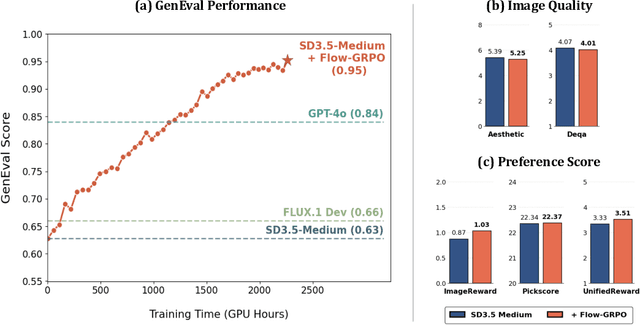
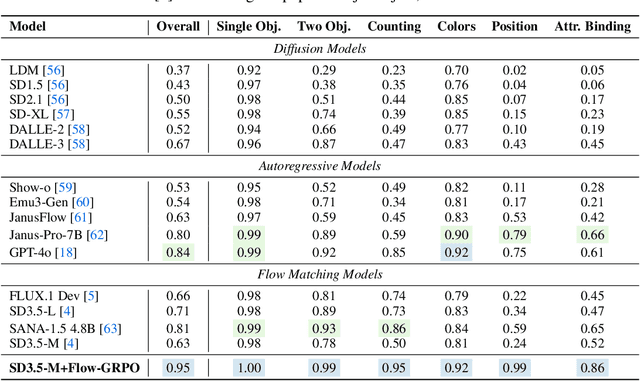
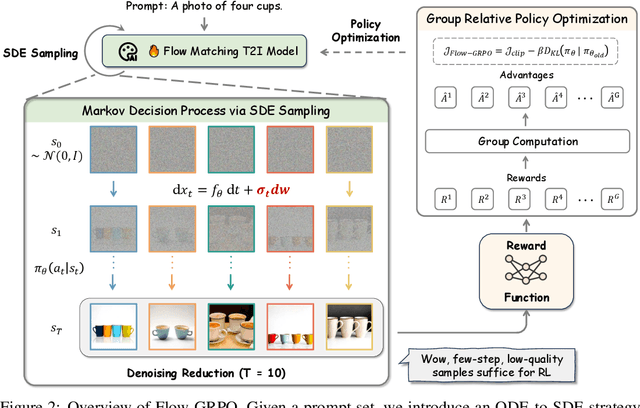
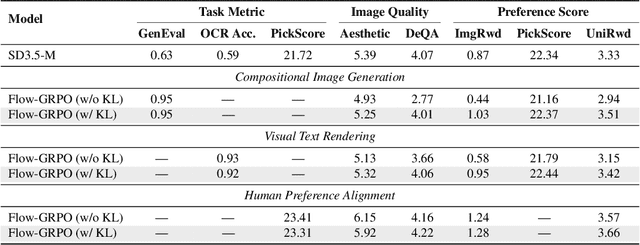
Abstract:We propose Flow-GRPO, the first method integrating online reinforcement learning (RL) into flow matching models. Our approach uses two key strategies: (1) an ODE-to-SDE conversion that transforms a deterministic Ordinary Differential Equation (ODE) into an equivalent Stochastic Differential Equation (SDE) that matches the original model's marginal distribution at all timesteps, enabling statistical sampling for RL exploration; and (2) a Denoising Reduction strategy that reduces training denoising steps while retaining the original inference timestep number, significantly improving sampling efficiency without performance degradation. Empirically, Flow-GRPO is effective across multiple text-to-image tasks. For complex compositions, RL-tuned SD3.5 generates nearly perfect object counts, spatial relations, and fine-grained attributes, boosting GenEval accuracy from $63\%$ to $95\%$. In visual text rendering, its accuracy improves from $59\%$ to $92\%$, significantly enhancing text generation. Flow-GRPO also achieves substantial gains in human preference alignment. Notably, little to no reward hacking occurred, meaning rewards did not increase at the cost of image quality or diversity, and both remained stable in our experiments.
Asymmetric Decision-Making in Online Knowledge Distillation:Unifying Consensus and Divergence
Mar 09, 2025Abstract:Online Knowledge Distillation (OKD) methods streamline the distillation training process into a single stage, eliminating the need for knowledge transfer from a pretrained teacher network to a more compact student network. This paper presents an innovative approach to leverage intermediate spatial representations. Our analysis of the intermediate features from both teacher and student models reveals two pivotal insights: (1) the similar features between students and teachers are predominantly focused on foreground objects. (2) teacher models emphasize foreground objects more than students. Building on these findings, we propose Asymmetric Decision-Making (ADM) to enhance feature consensus learning for student models while continuously promoting feature diversity in teacher models. Specifically, Consensus Learning for student models prioritizes spatial features with high consensus relative to teacher models. Conversely, Divergence Learning for teacher models highlights spatial features with lower similarity compared to student models, indicating superior performance by teacher models in these regions. Consequently, ADM facilitates the student models to catch up with the feature learning process of the teacher models. Extensive experiments demonstrate that ADM consistently surpasses existing OKD methods across various online knowledge distillation settings and also achieves superior results when applied to offline knowledge distillation, semantic segmentation and diffusion distillation tasks.
LEDiT: Your Length-Extrapolatable Diffusion Transformer without Positional Encoding
Mar 07, 2025Abstract:Diffusion transformers(DiTs) struggle to generate images at resolutions higher than their training resolutions. The primary obstacle is that the explicit positional encodings(PE), such as RoPE, need extrapolation which degrades performance when the inference resolution differs from training. In this paper, we propose a Length-Extrapolatable Diffusion Transformer(LEDiT), a simple yet powerful architecture to overcome this limitation. LEDiT needs no explicit PEs, thereby avoiding extrapolation. The key innovations of LEDiT are introducing causal attention to implicitly impart global positional information to tokens, while enhancing locality to precisely distinguish adjacent tokens. Experiments on 256x256 and 512x512 ImageNet show that LEDiT can scale the inference resolution to 512x512 and 1024x1024, respectively, while achieving better image quality compared to current state-of-the-art length extrapolation methods(NTK-aware, YaRN). Moreover, LEDiT achieves strong extrapolation performance with just 100K steps of fine-tuning on a pretrained DiT, demonstrating its potential for integration into existing text-to-image DiTs. Project page: https://shenzhang2145.github.io/ledit/
Optimizing Knowledge Distillation in Transformers: Enabling Multi-Head Attention without Alignment Barriers
Feb 11, 2025Abstract:Knowledge distillation (KD) in transformers often faces challenges due to misalignment in the number of attention heads between teacher and student models. Existing methods either require identical head counts or introduce projectors to bridge dimensional gaps, limiting flexibility and efficiency. We propose Squeezing-Heads Distillation (SHD), a novel approach that enables seamless knowledge transfer between models with varying head counts by compressing multi-head attention maps via efficient linear approximation. Unlike prior work, SHD eliminates alignment barriers without additional parameters or architectural modifications. Our method dynamically approximates the combined effect of multiple teacher heads into fewer student heads, preserving fine-grained attention patterns while reducing redundancy. Experiments across language (LLaMA, GPT) and vision (DiT, MDT) generative and vision (DeiT) discriminative tasks demonstrate SHD's effectiveness: it outperforms logit-based and feature-alignment KD baselines, achieving state-of-the-art results in image classification, image generation language fine-tuning, and language pre-training. The key innovations of flexible head compression, projector-free design, and linear-time complexity make SHD a versatile and scalable solution for distilling modern transformers. This work bridges a critical gap in KD, enabling efficient deployment of compact models without compromising performance.
Improving Video Generation with Human Feedback
Jan 23, 2025



Abstract:Video generation has achieved significant advances through rectified flow techniques, but issues like unsmooth motion and misalignment between videos and prompts persist. In this work, we develop a systematic pipeline that harnesses human feedback to mitigate these problems and refine the video generation model. Specifically, we begin by constructing a large-scale human preference dataset focused on modern video generation models, incorporating pairwise annotations across multi-dimensions. We then introduce VideoReward, a multi-dimensional video reward model, and examine how annotations and various design choices impact its rewarding efficacy. From a unified reinforcement learning perspective aimed at maximizing reward with KL regularization, we introduce three alignment algorithms for flow-based models by extending those from diffusion models. These include two training-time strategies: direct preference optimization for flow (Flow-DPO) and reward weighted regression for flow (Flow-RWR), and an inference-time technique, Flow-NRG, which applies reward guidance directly to noisy videos. Experimental results indicate that VideoReward significantly outperforms existing reward models, and Flow-DPO demonstrates superior performance compared to both Flow-RWR and standard supervised fine-tuning methods. Additionally, Flow-NRG lets users assign custom weights to multiple objectives during inference, meeting personalized video quality needs. Project page: https://gongyeliu.github.io/videoalign.
Solution of Multiview Egocentric Hand Tracking Challenge ECCV2024
Sep 28, 2024


Abstract:Multi-view egocentric hand tracking is a challenging task and plays a critical role in VR interaction. In this report, we present a method that uses multi-view input images and camera extrinsic parameters to estimate both hand shape and pose. To reduce overfitting to the camera layout, we apply crop jittering and extrinsic parameter noise augmentation. Additionally, we propose an offline neural smoothing post-processing method to further improve the accuracy of hand position and pose. Our method achieves 13.92mm MPJPE on the Umetrack dataset and 21.66mm MPJPE on the HOT3D dataset.
Cascade Prompt Learning for Vision-Language Model Adaptation
Sep 26, 2024
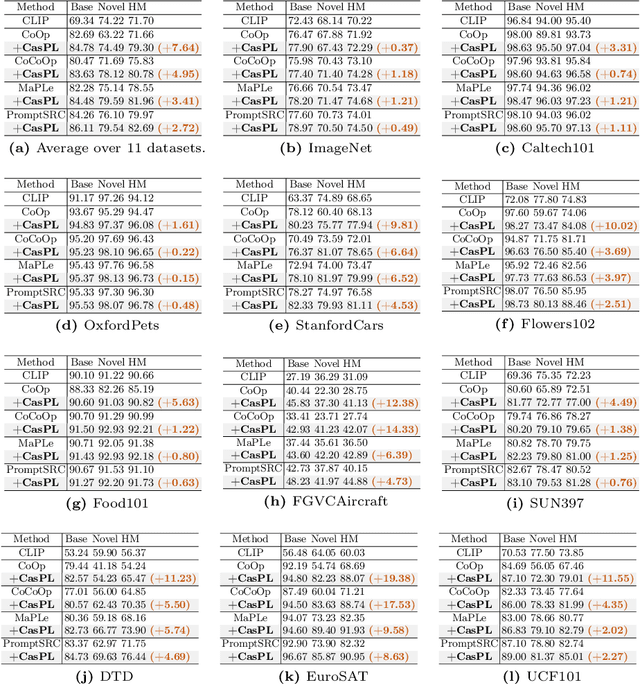
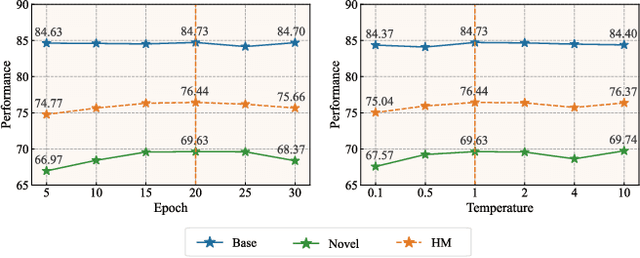

Abstract:Prompt learning has surfaced as an effective approach to enhance the performance of Vision-Language Models (VLMs) like CLIP when applied to downstream tasks. However, current learnable prompt tokens are primarily used for the single phase of adapting to tasks (i.e., adapting prompt), easily leading to overfitting risks. In this work, we propose a novel Cascade Prompt Learning CasPL framework to enable prompt learning to serve both generic and specific expertise (i.e., boosting and adapting prompt) simultaneously. Specifically, CasPL is a new learning paradigm comprising two distinct phases of learnable prompts: the first boosting prompt is crafted to extract domain-general knowledge from a senior larger CLIP teacher model by aligning their predicted logits using extensive unlabeled domain images. The second adapting prompt is then cascaded with the frozen first set to fine-tune the downstream tasks, following the approaches employed in prior research. In this manner, CasPL can effectively capture both domain-general and task-specific representations into explicitly different gradual groups of prompts, thus potentially alleviating overfitting issues in the target domain. It's worth noting that CasPL serves as a plug-and-play module that can seamlessly integrate into any existing prompt learning approach. CasPL achieves a significantly better balance between performance and inference speed, which is especially beneficial for deploying smaller VLM models in resource-constrained environments. Compared to the previous state-of-the-art method PromptSRC, CasPL shows an average improvement of 1.85% for base classes, 3.44% for novel classes, and 2.72% for the harmonic mean over 11 image classification datasets. Code is publicly available at: https://github.com/megvii-research/CasPL.
Revisiting Prompt Pretraining of Vision-Language Models
Sep 10, 2024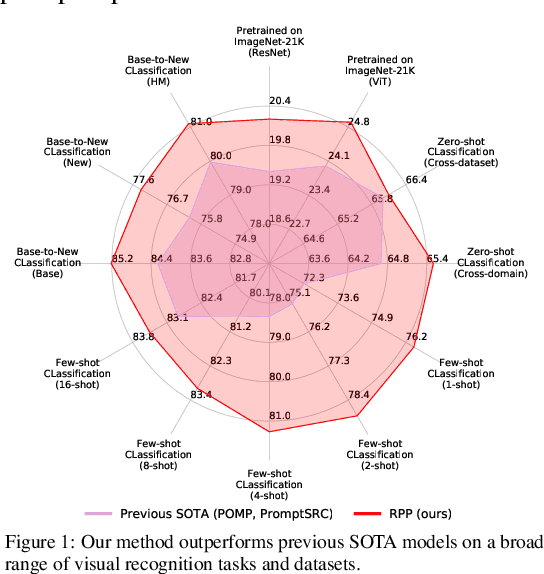
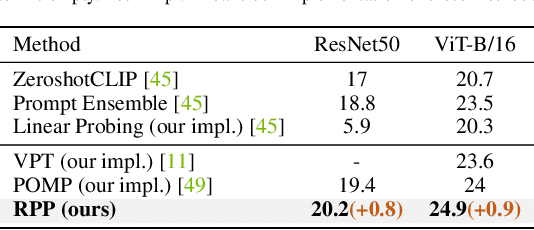
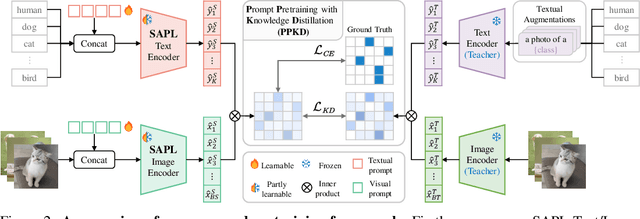

Abstract:Prompt learning is an effective method to customize Vision-Language Models (VLMs) for various downstream tasks, involving tuning very few parameters of input prompt tokens. Recently, prompt pretraining in large-scale dataset (e.g., ImageNet-21K) has played a crucial role in prompt learning for universal visual discrimination. However, we revisit and observe that the limited learnable prompts could face underfitting risks given the extensive images during prompt pretraining, simultaneously leading to poor generalization. To address the above issues, in this paper, we propose a general framework termed Revisiting Prompt Pretraining (RPP), which targets at improving the fitting and generalization ability from two aspects: prompt structure and prompt supervision. For prompt structure, we break the restriction in common practice where query, key, and value vectors are derived from the shared learnable prompt token. Instead, we introduce unshared individual query, key, and value learnable prompts, thereby enhancing the model's fitting capacity through increased parameter diversity. For prompt supervision, we additionally utilize soft labels derived from zero-shot probability predictions provided by a pretrained Contrastive Language Image Pretraining (CLIP) teacher model. These soft labels yield more nuanced and general insights into the inter-class relationships, thereby endowing the pretraining process with better generalization ability. RPP produces a more resilient prompt initialization, enhancing its robust transferability across diverse visual recognition tasks. Experiments across various benchmarks consistently confirm the state-of-the-art (SOTA) performance of our pretrained prompts. Codes and models will be made available soon.
MegActor-$Σ$: Unlocking Flexible Mixed-Modal Control in Portrait Animation with Diffusion Transformer
Aug 27, 2024



Abstract:Diffusion models have demonstrated superior performance in the field of portrait animation. However, current approaches relied on either visual or audio modality to control character movements, failing to exploit the potential of mixed-modal control. This challenge arises from the difficulty in balancing the weak control strength of audio modality and the strong control strength of visual modality. To address this issue, we introduce MegActor-$\Sigma$: a mixed-modal conditional diffusion transformer (DiT), which can flexibly inject audio and visual modality control signals into portrait animation. Specifically, we make substantial advancements over its predecessor, MegActor, by leveraging the promising model structure of DiT and integrating audio and visual conditions through advanced modules within the DiT framework. To further achieve flexible combinations of mixed-modal control signals, we propose a ``Modality Decoupling Control" training strategy to balance the control strength between visual and audio modalities, along with the ``Amplitude Adjustment" inference strategy to freely regulate the motion amplitude of each modality. Finally, to facilitate extensive studies in this field, we design several dataset evaluation metrics to filter out public datasets and solely use this filtered dataset to train MegActor-$\Sigma$. Extensive experiments demonstrate the superiority of our approach in generating vivid portrait animations, outperforming previous methods trained on private dataset.
 Add to Chrome
Add to Chrome Add to Firefox
Add to Firefox Add to Edge
Add to Edge